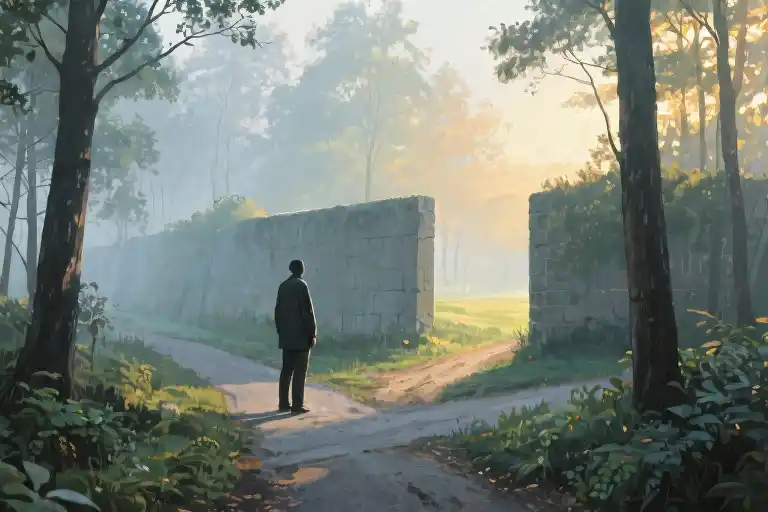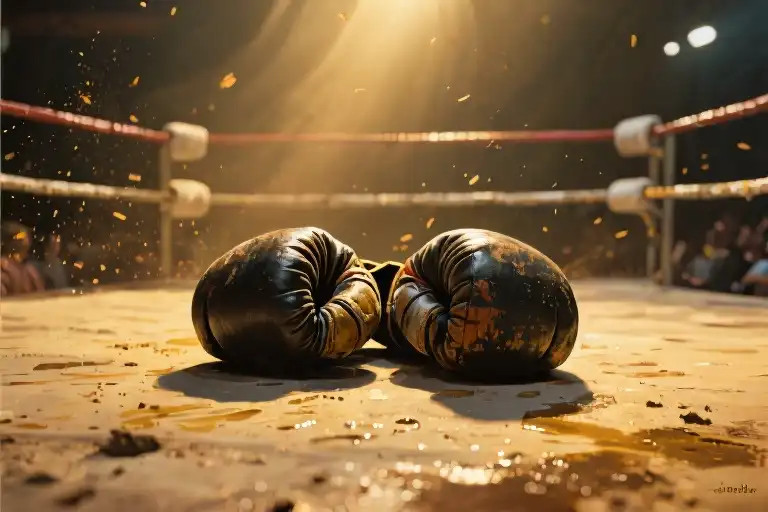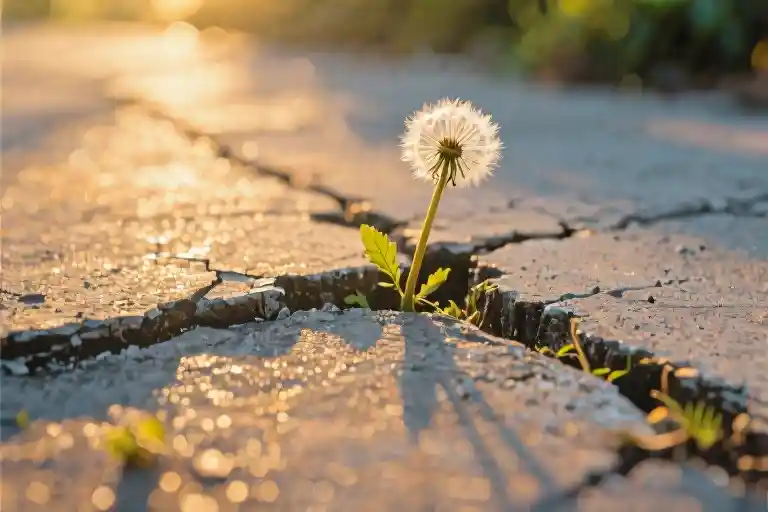The glow of your phone screen casts shadows across the ceiling at 2:17 AM. Again. Your thumb swipes upward mechanically, retracing conversations that always end where you didn’t want them to. That unanswered “goodnight” from three weeks ago. The carefully crafted joke that earned a single heart emoji. The photo you liked within 37 seconds of posting – did they notice the immediacy?
We’ve all been architects of these silent vigils, constructing meaning from breadcrumbs while ignoring the banquet we’re being denied. If love could be earned through persistence alone, why do the most devoted often become emotional archivists – cataloging near-misses and almost-could-have-beens?
This isn’t another lecture about ‘moving on.’ What we’re dismantling here runs deeper – the dangerous alchemy that tricks us into believing devotion can transmute into reciprocation. That our presence alone should catalyze love where none existed. The painful truth? Unrequited love operates on different physics entirely.
Over the next sections, we’ll examine:
- The psychological mirage that makes waiting feel productive
- Why love resists transactional expectations
- How to redirect that emotional energy toward connections that flow naturally
Consider this your permission slip to stop auditing your worth through someone else’s indifference. The love you desire isn’t hiding in their delayed responses – it’s waiting where effort and affection travel the same two-way street.
Why Your Efforts Don’t Earn Love Back
That text you keep drafting and deleting at 2 AM. Those imaginary conversations replaying in your head. The way your heart still leaps when their name appears on your phone—even though it’s just a group chat notification. If devotion could be measured in sleepless nights and swallowed pride, you’d have earned their love ten times over by now.
Yet here’s the uncomfortable truth no one tells you in romantic movies: Love doesn’t operate on a points system. Those three painful misconceptions might be keeping you stuck:
“If I Wait Long Enough, They’ll Change”
We’ve all watched someone scroll past our carefully crafted messages while replying instantly to others. That sinking feeling? Your subconscious recognizing what your heart refuses to accept—attention isn’t currency you can save up to buy affection.
Psychological studies on unrequited love reveal a cruel irony: The more effort one invests, the more significance they attribute to the relationship… while the other person often feels increasingly pressured to withdraw. Like trying to force a plant to grow faster by overwatering it, excessive attention can drown the very connection you’re trying to cultivate.
“My Love Should Be Repaid in Kind”
Remember drawing those elaborate Valentine’s cards as a child, confused when the recipient didn’t react with movie-level enthusiasm? Many of us never outgrow that expectation. The ego translates emotional investment into imagined debt, whispering: After all I’ve done/sacrificed/felt, how dare they not reciprocate?
This love and ego entanglement explains why rejection often feels like personal failure. But consider this—if someone gave you a gift you never asked for, would you owe them anything? Authentic connection flows freely, not through obligation.
“Their Indifference Means I’m Unworthy”
Here’s where projection distorts reality: We assume others evaluate us with the same scrutiny we apply to ourselves. That “not good enough” narrative? It’s your inner critic speaking, not some universal truth about your desirability.
Neurologically, one-sided love activates the same brain regions as addiction and obsessive-compulsive disorder. The chemical cocktail of dopamine (anticipation) and cortisol (stress) creates a false sense of high stakes. In reality, their inability to love you back says everything about their emotional capacity and nothing about your worth.
The Freedom in Letting Go
When you stop seeing their indifference as a puzzle to solve, something unexpected happens. Space opens up—for relationships that don’t require mental gymnastics, for self-respect that isn’t contingent on someone else’s validation. As poet Nayyirah Waheed wrote: “You do not have to be a fire for every mountain blocking you. You could be water and soft river your way to freedom.”
That text can remain unsent tonight. Tomorrow, the craving to send it will feel less urgent. One day, you’ll realize you forgot to check if they’ve seen your last message… and that’s when you’ll know the healing has begun.
Love Flows Freely: You Can’t Force a Flower to Bloom
Love moves like the wind—you can feel its presence, but you can’t trap it in your hands. It exists in moments, in glances, in the unspoken understanding between two people who choose each other freely. The harder you try to grasp it, the faster it slips through your fingers. This is the fundamental truth about love that so many of us resist: it cannot be manufactured, negotiated, or demanded.
The Nature of Love’s Current
Think of love as a river. When two people stand in its flow together, the water nourishes them equally—carrying them forward in the same direction. But when one person tries to drag another against the current, both end up exhausted. This is what happens in one-sided relationships:
- You become the sole gardener tending to a plant that refuses to take root. No amount of watering (texts, favors, or declarations) can make a seed grow without its own inherent will to thrive.
- You mistake persistence for connection, like holding a seashell to your ear and imagining the ocean’s reply. The echo you hear is your own longing, not reciprocal feeling.
- Energy drains silently as you pour yourself into someone who remains emotionally unavailable. Like lighting a candle at both ends, the brightness feels intense—until you’re left with wax and smoke.
A client once described her five-year unrequited love as “trying to assemble furniture without all the parts—you keep hammering, but the structure never holds.” This is the cruelty of forced love: it demands we ignore reality’s blueprint.
The Myth of the “Big Gesture”
Pop culture sells us dangerous fantasies—the airport sprint, the boombox serenade, the grand romantic sacrifice. These narratives suggest love is something to be won through sheer effort. But real intimacy isn’t a trophy earned by endurance; it’s a silent agreement between two people who say “yes” without being asked twice.
Consider the difference:
| Performative Love | Organic Love |
|---|---|
| Requires an audience (“Look how much I care!”) | Exists privately between two people |
| Feels like constant auditioning | Feels like coming home |
| Measures “proofs” of love (gifts, sacrifices) | Measures mutual ease and growth |
| Asks “Do they love me yet?” | Knows “We love each other now” |
When love is real, you’ll never need to question your place in someone’s life. The poet David Whyte writes, “The heart moves on water.” Notice the verb: moves, not struggles or pleads.
The Cost of Forcing Connections
Psychologists identify three hidden taxes of unreciprocated love:
- Opportunity Blindness
While fixated on someone unavailable, we miss potential partners who do light up when we enter the room. Like staring at a closed door, we don’t see the windows left open. - Self-Betrayal
Each ignored text we rationalize, each excuse we accept for their indifference, chips away at our standards. We teach ourselves that crumbs are feasts. - Emotional Inflation
The longer we invest, the harder it becomes to walk away—not because the bond deepened, but because we can’t bear admitting our investment was misplaced. Like continuing to bet on a losing hand.
A study in the Journal of Social and Personal Relationships found that people clinging to one-sided attachments experienced cortisol levels similar to chronic stress sufferers. Your body knows the truth long before your heart admits it.
The Liberation in Letting Go
Here’s the paradox: releasing someone who doesn’t love you creates space for two relationships to flourish—one with a future partner, and one with yourself. As author Cheryl Strayed writes, “Wanting leaves room for the unimaginable to happen.”
Try this reframe:
- Instead of “I lost someone who didn’t love me,” try “I regained all the energy I was wasting.”
- Replace “If only I’d tried harder” with “No healthy relationship requires this much convincing.”
- Trade “They were my only chance” for “Now I’m available when real love arrives.”
Love should feel like breathing, not like holding your breath waiting for permission to exhale. When you stop tending dead gardens, you notice the wildflowers already growing at your feet.
Three Steps to Stop Waiting and Start Living Again
Step 1: Face the Truth
The first and most crucial step in moving forward is acknowledging a simple yet painful reality: they will never love you back. This isn’t about self-deprecation—it’s about liberation.
Try this exercise: Write down this statement and post it where you’ll see it daily:
“[Name] will never love me the way I want to be loved, and that’s okay.”
Research shows that writing down painful truths activates different neural pathways than just thinking about them, helping your brain process the reality more effectively. When we repeatedly expose ourselves to difficult truths, they gradually lose their emotional sting—like watching a scary movie until it becomes boring.
Step 2: Cut the Emotional Feedback Loops
Your brain keeps replaying memories like a broken record because you’ve trained it to. Every time you:
- Scroll through old photos
- Reread saved messages
- Stalk their social media
…you’re essentially telling your brain: “This pain is important—keep analyzing it!”
Take concrete actions:
- Digital detox: Unfollow/mute them across all platforms for 30 days (not blocking—this often backfires). Studies show it takes about 25 days for new habits to override old neural pathways.
- Memory management: Move photos to a hidden folder labeled “Archive” rather than deleting (less triggering than permanent deletion).
- Environment reset: Change your phone wallpaper, rearrange your room—subtle cues that subconsciously signal “new chapter.”
Step 3: Redirect Your Energy
Love is energy—and right now, yours is stuck orbiting someone else’s universe. The 21-Day Self-Love Challenge helps rebuild your gravitational pull:
Daily micro-actions:
- Day 1-7: Physical reset
- 7-minute morning stretch
- Try one new food
- Day 8-14: Mental expansion
- Read 10 pages of a non-romance book
- Learn a TikTok dance (yes, seriously—movement therapy works)
- Day 15-21: Social rewiring
- Compliment one stranger daily
- Attend one new group activity (book club, hiking meetup)
Why this works: Neuroscience shows it takes three weeks to form new neural pathways. Each small win releases dopamine, gradually rewiring your brain’s reward system away from obsessive thoughts.
“You’re not giving up—you’re making space. Every ounce of energy spent waiting is stolen from what could be building your future.”
The Science Behind Letting Go
University of Colorado research found that:
- Participants who practiced active redirection (like our 21-day challenge) reported 68% faster emotional recovery
- Those who combined digital detox with new experiences showed increased gray matter density in decision-making brain regions
This isn’t just feel-good advice—it’s neurological renovation. You’re not erasing love; you’re upgrading its address.
When Letting Go Leads to Love: Real Stories of Moving On
The Programmer Who Found Love by Giving Back
For five years, Mark measured his worth by unread messages. A brilliant coder who could debug complex algorithms, he remained helplessly stuck on an emotional loop – refreshing his college crush’s Instagram while she dated others. “I kept thinking if I became successful enough, she’d finally notice me,” he recalls. The breakthrough came when a friend dragged him to a coding workshop for underprivileged teens. “Seeing those kids light up when their first program ran…it was like waking up from a dream.”
Within months of volunteering regularly, two transformations occurred: Mark stopped checking his phone for her updates, and he caught the shy smile of a fellow tutor named Elena. “Turns out, what I mistook for incompleteness without her was actually space for something real,” says Mark, now married three years. His story mirrors psychological findings that altruism activates reward centers similarly to romantic love, effectively “rewiring” emotional focus.
The Writer Who Turned Heartache into Art
Journal entries about unrequited love filled Laura’s notebooks for a decade until she did the unthinkable – published them as fiction. “Writing ‘The Man Who Wouldn’t Love Me Back’ was my exorcism,” she explains. The surprise bestseller attracted a reader who recognized his own past in her words. “He said, ‘Anyone who understands love this deeply deserves to receive it fully.'” Their first anniversary is next month.
This aligns with therapeutic “post-traumatic growth” research showing creative expression helps reprocess emotional pain. As psychologist Dr. Ellen Bass notes: “Transforming suffering into art creates meaning that naturally attracts healthier connections.”
The Numbers Don’t Lie
A University of Chicago longitudinal study tracking 1,200 individuals found:
- 63% reported increased life satisfaction within a year of releasing one-sided attachments
- 78% formed reciprocal relationships after redirecting energy toward self-development
- Participants described feeling “lighter” and “more open” to genuine connection
Your Next Chapter Starts Now
These stories share a common thread – liberation came not from being chosen by their crushes, but from choosing themselves. Like Mark discovering purpose beyond pursuit or Laura reclaiming her narrative, your turning point awaits when you:
- Redirect energy from waiting to creating
- Reframe rejection as protection from mismatched bonds
- Remain open to love arriving in unexpected forms
The most poetic truth? Those who stop waiting at closed doors often find the right one was behind them all along.
Closing Thoughts: Love Is a Forest, Not a Dead End
Love doesn’t follow a single predetermined path. It’s not a narrow bridge where you must wait indefinitely for someone to cross over to you. True love resembles a vast forest with countless trails – some may lead to dead ends, while others open up to breathtaking clearings you never imagined existed.
The painful truth we often resist acknowledging? When love only flows in one direction, we’re not standing on a bridge waiting for connection – we’re staring at a wall. That persistent hope of “maybe someday” can become the very barrier preventing us from exploring other paths where mutual love actually grows.
Consider this: every moment spent waiting for unavailable love is a moment stolen from discovering relationships where affection flows naturally. Like sunlight filtering through trees, healthy love reaches you effortlessly. It doesn’t demand constant proof of your worth or require you to stand perfectly still in hope of attention.
Three signs you’re ready to leave the dead end and enter the forest:
- You stop checking your phone for messages that never come
- The thought of their indifference hurts less than your own self-neglect
- You catch yourself imagining happiness beyond this single story
Psychology research confirms what intuition whispers: those who redirect their energy from unrequited love to self-growth report significantly higher life satisfaction within months. Like the programmer who traded five years of longing for volunteer work – where he met his now-wife. Or the writer who transformed heartache into a novel that attracted genuine admirers.
Final question lingers like morning mist between the trees: Are you ready to turn away from that immovable wall and step into the forest? Where countless possibilities grow wild and untamed, where the right love finds you while you’re busy living, not waiting?
Further resources:
- Attached by Amir Levine (understanding attachment styles)
- The Gifts of Imperfection by Brené Brown (building self-worth)
- “How to Fix a Broken Heart” TED Talk by Guy Winch
Remember – you’re not giving up by moving on. You’re making space for love that doesn’t require negotiation.





